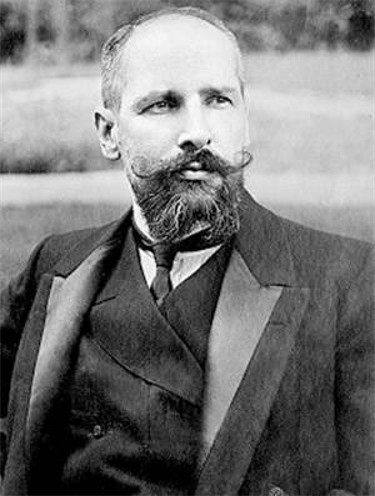Stolypin agrarian reforms
Stolypin agrarian reforms. A series of measures introduced by Petr Stolypin, the head of the Council of Ministers of the Russian Empire, between 1906 and 1911 in order to restructure the peasant land tenure system. They were instituted in the wake of the Revolution of 1905 in an effort to deal with the ongoing agrarian problem.
The legislation in which the reforms were introduced included the ukase ‘Concerning the Fulfillment of Certain Existing Laws on Rural Land Ownership and Land Use’ (22 November 1906) and a law passed by the State Duma on 27 June 1910. Those removed restrictions on landholding imposed by the peasant commune (obshchina). All peasants were given the right to leave such communes along with the lands apportioned to them. Peasants also gained the right to demand that their allotments be consolidated into an integrated landholding, which could be farmed as a khutir (if the household were settled on the property) or a vidrub (if the household remained in a village). The latter right marked a radical departure from the common practice of farming small, scattered strips of land. The Peasant Land Bank provided loans for the purchase of land to establish vidrub or khutir holdings. The last reform was the Statute on Land Organization of 11 June 1911, which set a definite agenda for the land settlement commissions (at the gubernia and district volost levels) created by the ukase of 1906. In the Russian Empire in 1907–15 approximately 26 percent of the total obshchina membership (2.5 million householders) took advantage of the reforms to acquire about 16.9 million desiatins of land (15 percent of total communal holdings).
In Ukraine the secession from communes was even more thoroughgoing, although it was also uneven because of the near-total absence of the obshchina in Right-Bank Ukraine and Poltava gubernia. As a result of the reforms about 42 percent of commune householders seceded in Southern Ukraine, 16.5 percent in Left-Bank Ukraine, and 48 percent in Right-Bank Ukraine. In Right-Bank Ukraine and the Poltava region virtually all of the land used by the peasants became privately owned; in Chernihiv gubernia, the majority; and in Katerynoslav gubernia, Kharkiv gubernia, Kherson gubernia, and Tavriia gubernia, about half. In 1907–11 approximately 225,000 Ukrainian householders established private vidruby and khutory consisting of 1.8 million desiatins of land. The most marked growth of such holdings occurred in the steppe gubernias and in Volhynia. Largely as a result of loans extended by the Peasant Land Bank peasants bought 385,000 desiatins of landowners' lands in 1906–9. By 1916 some 500,000 households in the nine Ukrainian gubernias, with 3.7 million desiatins of land, had been reorganized by land settlement commissions.
The new system encouraged peasants to show initiative and to improve their households. Assistance was provided by the Peasant Land Bank, agricultural organizations, co-operatives, and zemstvo agronomists. Because of advancements in agricultural techniques (crop rotation) crop yields also improved (by 20 percent in 1904–12), and the value of farmsteads rose.
The intent of Stolypin's reforms was to improve the position of the wealthier peasants and establish it as a base of support for the troubled imperial regime. Accordingly the reforms benefitted only about 25 percent of the households. Poor and some middle-income peasants could not buy land because of high prices (400 to 700 rubles per desiatin in Right-Bank Ukraine) and were not given credit by the Peasant Land Bank. A substantial number of such peasants finally emigrated beyond the Urals to Asiatic Russia and the Far East, a practice also encouraged by Stolypin to reduce rural overpopulation. Ultimately the reforms gave rise to an even greater social differentiation among peasants, with the largest peasant households growing larger and the number of middle-sized holdings shrinking. Stolypin's reforms were therefore harshly criticized by Vladimir Lenin as well as by Russian and Ukrainian socialist parties.
BIBLIOGRAPHY
Pohrebil’s’kyi, O. Stolypins’ka reforma na Ukraïni (Kharkiv 1931)
Iakymenko, Mykola. ‘Orhanizatsiia pereselennia selian z Ukraïny v roky stolypins’koï ahrarnoï reformy (1906–1913),’ Ukraïns’kyi istorychnyi zhurnal, 1974, no. 7
Yaney, George. The Urge to Mobilize: Agrarian Reform in Russia, 1861–1930 (Urbana 1982)
Atkinson, Dorothy. The End of the Russian Land Commune, 1905–1930 (Stanford 1983)
Bohdan Wynar
[This article originally appeared in the Encyclopedia of Ukraine, vol. 5 (1993).]

